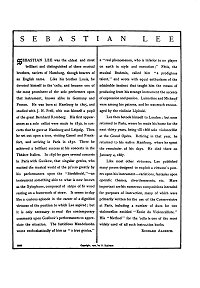Lee - 40 melodic and progressive etudes for cello
Lee - 40 melodic and progressive etudes for cello. You can download the sheet music Lee - 40 melodic and progressive etudes for cello on this page. This colorful musical composition is the significant sample opus for cello by the recognized virtuoso composition. This composition impresses the listeners by the clear by the harmonic phrases of cello and other interesting characteristics. Like most other virtuosos, Lee published many pieces designed to exploit a virtuoso's powers upon his instrument—variations, fantasies upon operatic themes, divertissements, etc. More important are his numerous compositions intended for purposes of instruction, many of which were primarily written for the use of the Conservatoire at Paris, including a number of duos for two violoncellos entitled "École du Violoncelliste." His "Method" for the 'cello is one of the most widely used of all such instruction books. To view the first page of Lee - 40 melodic and progressive etudes for cello click the music sheet image.
|
| PDF format sheet music |
|
|
Cello part: 51 pages. 4611 K
|
 |
|
| Download PDF (14.99
€) |
SEBASTIAN LEE was the eldest and most brilliant and distinguished of three musical brothers, natives of Hamburg, though bearers of an English name. Like his brother Louis, he devoted himself to the cello, and became one of the most prominent of the solo performers upon that instrument, known alike in Germany and France. He was born at Hamburg in 1805, and studied with J. N. Prell, who was himself a pupil of the great Bernhard Romberg. His first appearances as a solo cellist were made in 1830, in con-certs that he gave at Hamburg and Leipzig. Then he set out upon a tour, visiting Cassel and Frankfort, and arriving in Paris in 1832. There he achieved a brilliant success at his concerts in the Théâtre Italien. In 1836 he gave several concerts In Paris with Gusikow, that singular genius, who excited the musical world of the 30's so greatly by his performances upon the " Strohfiedel,"—an instrument something akin to what is now known as the Xylophone, composed of strips of fir wood resting on a framework of straw. It seems to-day like a curious episode in the career by the dignified virtuoso of the position to which Lee aspired ; but it is only necessary, to read the contemporary comments upon Guslkow's performances to appreciate the situation. The fastidious Mendelssohn wrote enthusiastically of him as "a true genius", a "real phenomenon, who is inferior to no player on earth in style and execution; Fétis, the musical Brahmin, called him "a prodigious talent," and wrote with equal enthusiasm of the admirable instinct that taught him the means of producing from his strange instrument the accents of expression and passion. Lamartine and Michaud were among his patrons, and he was much encouraged by the violinist Lipinski.
Lee then betook himself to London; but soon returned to Paris, wnere he made his home for the next thirty years, being till 1868 solo violoncellist at the Grand Opéra. Retiring in that year, he returned to his native Hamburg, where he spent the remainder, of his days. He died there on January 4, 1887.
Richard Aldrich. |
|